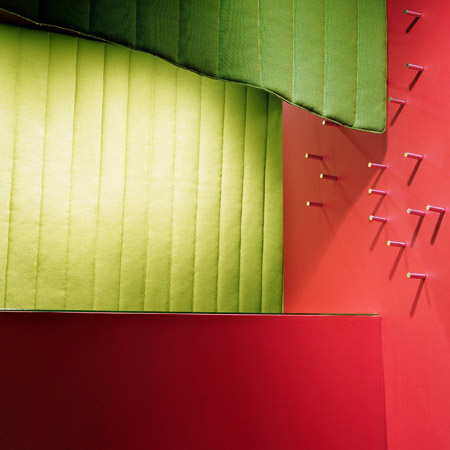
Camper store Paris by Ronan and Erwan Bouroullec
Shoe brand Camper has opened a store in Paris designed by French designers Ronan & Erwan Bouroullec.
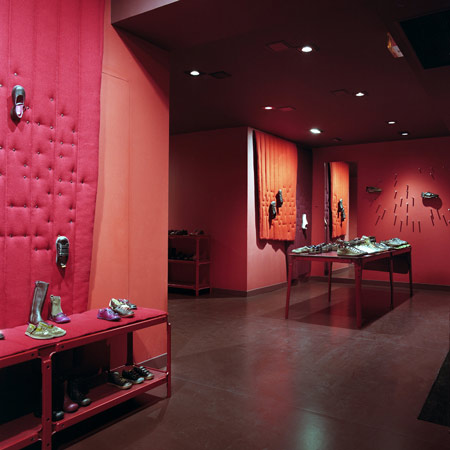
The store, next to the Centre Georges Pompidou, features furniture and textiles in different shades of red.
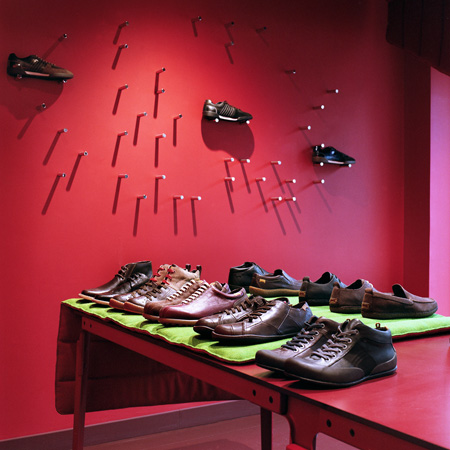
The project is part of the Camper Together series of stores, created in collaboration with various designers.
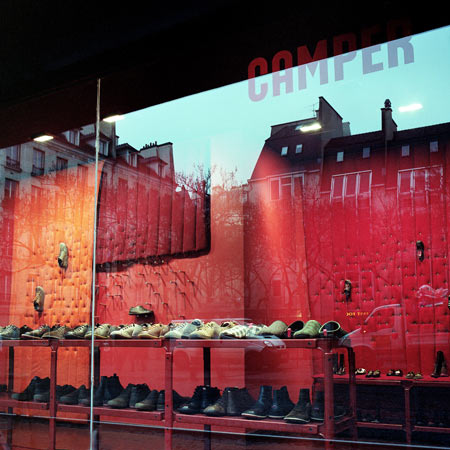
See our earlier stories on Camper stores by Jaime Hayón in Tokyo, Milan, Berlin and Barcelona.
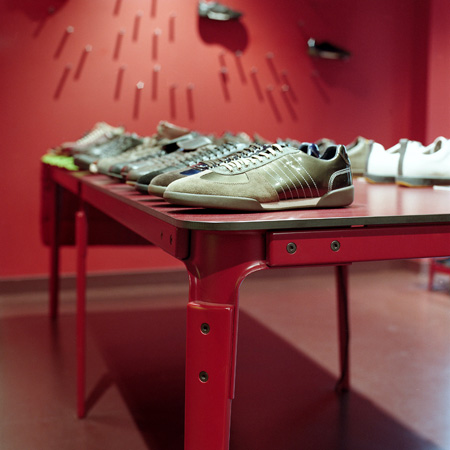
See store projects for Camper by Nendo, and by the Campana Brothers in London and Berlin.
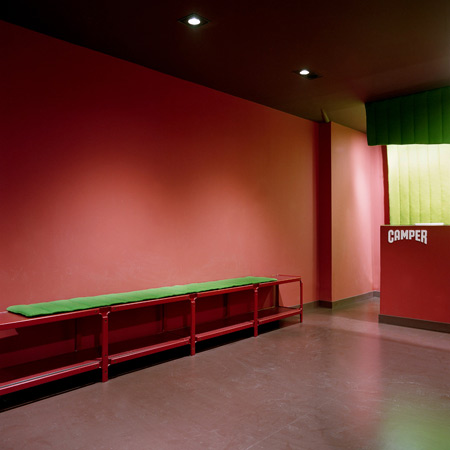
See shoes for Camper designed by Hella Jongerius and Jaime Hayón.
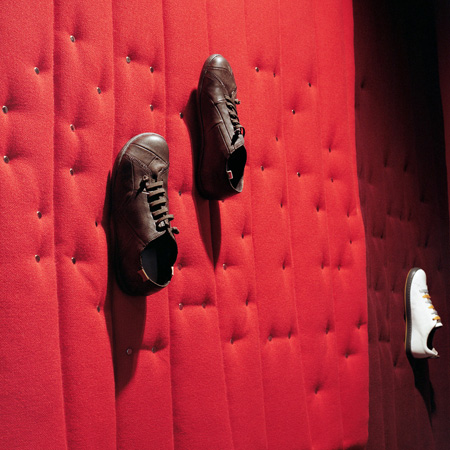
Here's some info from Camper:
--
Camper Together with Ronan & Erwan Bouroullec
New Camper Store in Pompidou, Paris
This extraordinary spot for a very special store project, designed by the Bouroullec brothers, is located beside Paris’ imposing Centre Pompidou, a Mecca that everyone with an interest in design culture must visit at least once in their lifetime. Thus, Ronan and Erwan make their debut as Camper collaborators in the very city where they live and work. Their new project has, for the time being, made Paris the city with the mos
for the time being, made Paris the city with the most Camper Together stores in the world.
“For us, Camper is a very interesting brand, in the sense that it has proven to have a very open mindset. Each store has its own atmosphere. The shoes also cover a very wide range of types and styles. Consequently, our collaboration has has been a unique chance for us to try to contribute a clear-cut idea of what a store in Paris should be, welcoming and straightforward. With the use of different shades of red, textile interventions and a furniture collection designed for private home use, we tried to create a space that was both evident and surprising, a space able to produce special sensations: the red adds warmth, the cloths muffle sounds and give depth and the household furniture confers an air of simplicity.
The textile interventions consist of backstitched blankets that partially cover the walls and certain furniture and décor elements. They are irregular and their relatively bright colours contrast with the red tone that pervades the entire store.”
Ronan and Erwan Bouroullec
Ronan and Erwan Bouroullec have worked together since 1999. They were born in Quimper, a town in Brittany, France – Ronan in 1971 and Erwan in 1976. The former studied at the École Supérieure des Arts Décoratifs of Paris, while the latter received his education at the École Nationale d’Arts of Cergy.
They have pursued their career with unusual discretion – it almost seems that they actually wished to pass unnoticed – and yet many consider that their work has begun to define a new era. The Bouroullec brothers are – if Philippe Starck will forgive the effrontery – the most prominent and prestigious French designers in the international arena.
Their claim to fame is the ease with which they come up with innovative ideas, and their style always finds elegance in sobriety. This is reflected in their first project for Camper, where the interior design is achieved with a unique collection of shelves, tables and chairs that were originally designed for a domestic setting, which allows customers to view and try on the footwear. This comfortable store has now become the third Camper venue in Paris, joining the shop designed by Alfredo Häberli in Faubourg St-Honoré and another designed by Jaime Hayon in Cherche Midi.
Camper Together.
Throughout its history Camper’s personality and in particular, the one that is reflected in its stores, has always been enriched by the contributions of designers, architects and artists. Carlos Ronaldo, Javier Mariscal, Neville Brody, Óscar Mariné, Peret or the Memphis group, among many others, apart from figures like Fernando Amat, Oleguer Armengol, Jordi Nogués, Shiro Miura or Martí Guixé, the most prolific in the past few years, have all contributed to these spaces, always different and always special and that have become, together, an important active in the brand because they truly transmit the brand’s values and image to the client.
The Together concept had already been born in Camper but had yet to be written down. It now takes on even more strength in the new projects, like this one developed “together” with the Bouroullec brothers and that follow the projects by Jaime Hayon, Alfredo Häberli, Campana Brothers or Konstantin Grcic for Camper in different cities of the world. Adding the experience of one to the wit of another, the Majorcan firm continues in the line of diversity versus the repetition that has established itself in the world of commercial interior design. Camper continues innovating and opts for new languages that communicate the essence of a brand that is always loyal to its original spirit.
The Camper stores
In 1981 Camper opened its first store in Barcelona. After seven years of commercializing its products in conventional multi-brand stores, they had realized that their shoes needed a different atmosphere that would permit interaction with the brand and access to its real environment. With this objective Camper developed their own concept of a store: A shoe shop that exhibited all the styles and sizes. It was revolutionary. The stores became a window through which Camper could show their shoes and their philosophy to the world.
In the beginning of the 90’s Camper began their international expansion and came to the realization that all stores of all brands in all shopping centres of all the cities in the world, were alike. The character of the city, its culture, became diluted in an interior design that although carefully planned, felt aseptic. For Camper the concepts of identity and diversity always go together, for this reason they could not share in this concept of global uniformity. From this observation came the idea of making every store different, every one with its own personality.